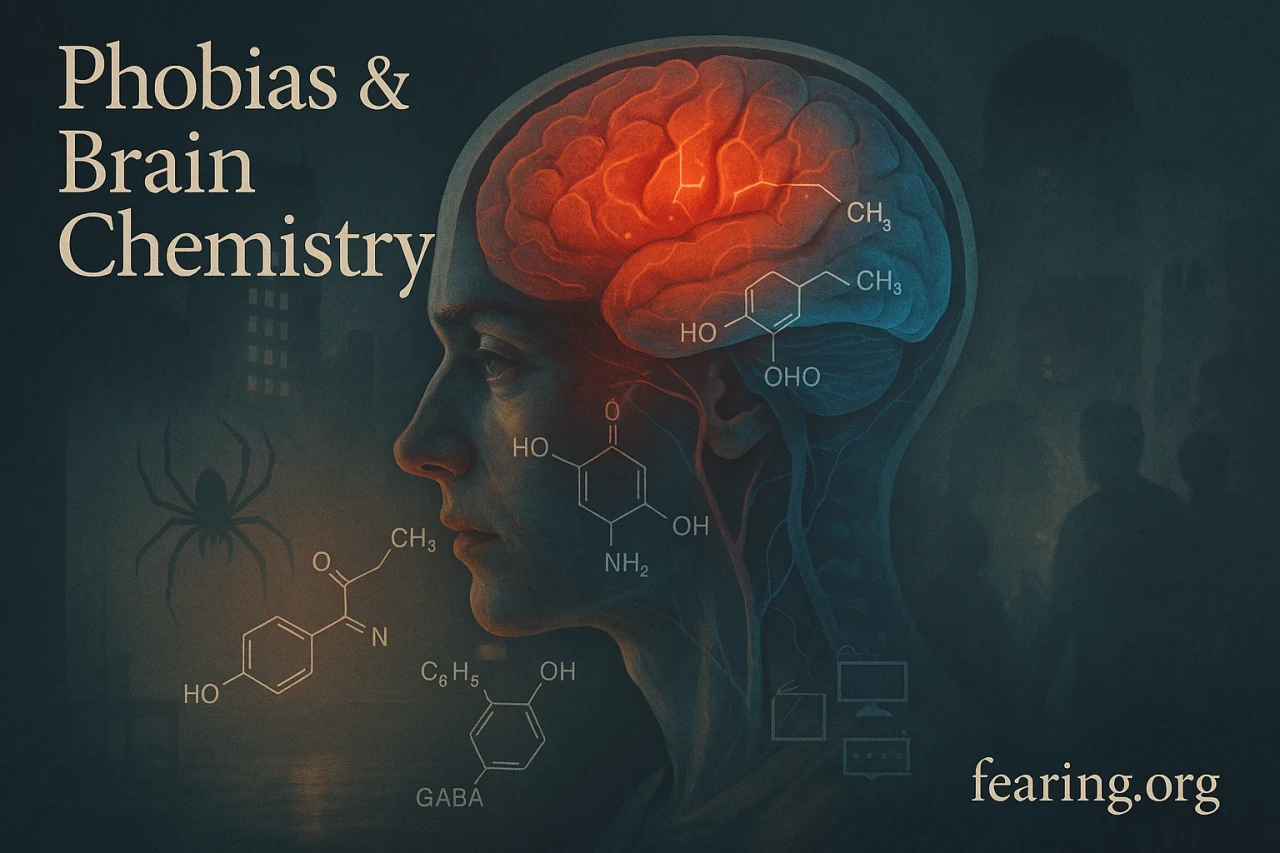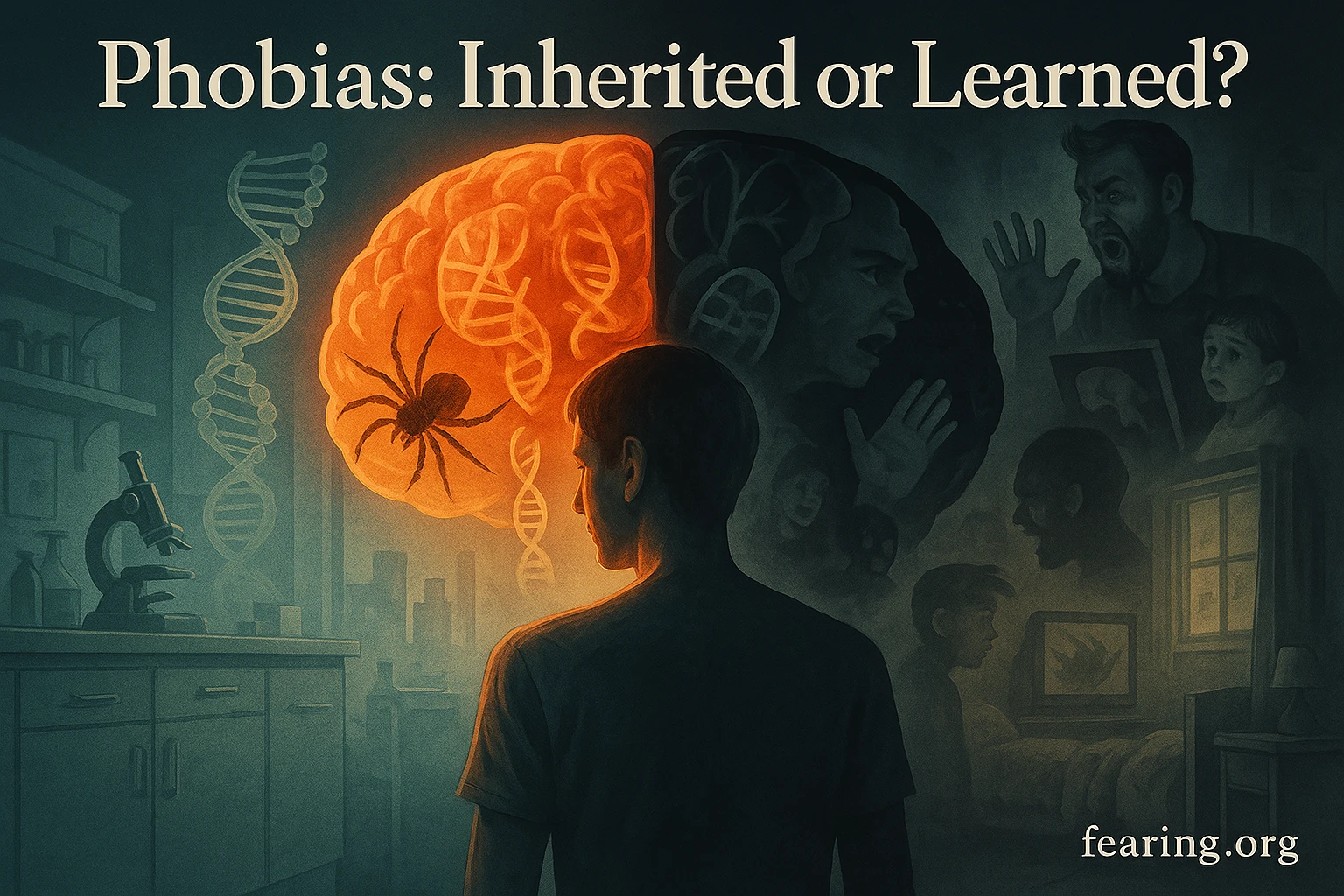Phobias are often misunderstood as mere overreactions or exaggerated fears, but neuroscience tells a more complex and revealing story. At their core, phobias are deeply rooted in brain function and chemical signaling. The intense, sometimes paralyzing fear response isn't just psychological—it's biochemical. So how exactly do phobias affect brain chemistry and overall mental health?
"A phobia isn't just in the mind—it's in the wiring."
In this comprehensive guide, we'll explore how phobias manifest in the brain, how neurotransmitters like serotonin and dopamine are involved, and how these imbalances influence mental health over time.
What Happens in the Brain During a Phobic Reaction?
Phobias trigger the fight-or-flight response, a survival mechanism designed to protect us from danger. When someone with a phobia is exposed to their trigger (e.g., a spider, airplane, or crowd), the brain reacts instantly:
Amygdala activation: This almond-shaped structure processes emotional reactions, especially fear. In individuals with phobias, the amygdala is hyperresponsive.
Hypothalamus signals the autonomic nervous system, increasing heart rate, breathing, and adrenaline.
Hippocampus stores fear-related memories, reinforcing the association between the trigger and danger.
This cascade creates a neurobiological feedback loop: the more the phobia is triggered, the more the brain strengthens the fear pathway.
Which Neurotransmitters Are Involved in Phobias?
1. Serotonin (5-HT)
Helps regulate mood, anxiety, and emotional stability
Low levels are linked to heightened fear responses
Many anti-anxiety medications aim to boost serotonin activity (e.g., SSRIs)
2. Dopamine
Involved in reward processing and anticipation
Imbalances may increase sensitivity to perceived threats
Abnormal dopamine levels are linked to both phobias and panic disorders
3. Norepinephrine (Noradrenaline)
Drives the physical symptoms of anxiety (e.g., rapid heartbeat, sweating)
Surges during acute phobic episodes
4. GABA (Gamma-Aminobutyric Acid)
The brain’s primary inhibitory neurotransmitter
Helps calm neural activity and reduce anxiety
Low GABA activity is associated with poor fear regulation and heightened reactivity
"Neurotransmitters don’t just carry messages—they shape our emotional reality."
Can Phobias Alter Brain Structure Over Time?
Chronic phobias can lead to functional and structural changes in the brain:
Amygdala enlargement: Repeated activation can increase its size and reactivity
Reduced hippocampal volume: Common in anxiety disorders, potentially impairing memory and learning
Cortical thinning in regions related to self-regulation and executive function
These adaptations may increase emotional dysregulation and make recovery more challenging without intervention.
How Do Phobias Affect Mental Health Long-Term?
Untreated phobias can significantly impact a person’s overall mental well-being. Common comorbidities include:
Generalized Anxiety Disorder (GAD)
Major Depressive Disorder (MDD)
Panic disorder
Obsessive-Compulsive Disorder (OCD)
Additionally, people with chronic phobias may develop:
Low self-esteem
Social withdrawal
Sleep disturbances
Increased risk of substance use (to self-medicate symptoms)
Phobias are not isolated conditions—they can form the foundation for a broader mental health struggle.
Can Brain Chemistry Be Rebalanced?
Yes. Neuroplasticity—the brain's ability to rewire itself—means that with treatment, chemical and structural changes can be reversed or reduced.
1. Cognitive Behavioral Therapy (CBT)
Changes thinking patterns and reduces overactivation of fear circuits
Proven to alter brain activity in the amygdala and prefrontal cortex
2. Exposure Therapy
Gradual exposure reduces amygdala reactivity over time
Builds tolerance and rewrites threat associations
3. Medication
SSRIs (selective serotonin reuptake inhibitors)
Benzodiazepines (for short-term anxiety relief)
Beta blockers (reduce physical symptoms)
4. Mindfulness and Meditation
Increase GABA activity
Promote emotional regulation and calm neural pathways
5. Biofeedback and Neurofeedback
Help individuals gain control over involuntary stress responses
Train the brain to produce calming patterns of electrical activity
"Every thought and treatment reshapes the brain—it’s never too late to rewire fear."
How Can You Support a Healthy Brain While Managing a Phobia?
In addition to therapy and medication, lifestyle changes can optimize brain chemistry:
Regular exercise (boosts dopamine and serotonin)
Balanced diet (rich in omega-3s, magnesium, and B vitamins)
Quality sleep (essential for neurotransmitter regulation)
Reducing alcohol and caffeine intake
Maintaining social connections and emotional expression
Final Thoughts
Phobias are not simply mental roadblocks—they are neurochemical events that alter the brain's wiring. Understanding the biological underpinnings of phobias can reduce stigma and encourage more compassionate, science-based treatment approaches.
With the right tools, support, and awareness, phobia-related brain changes can be softened, reshaped, and even reversed. The brain is not broken—it’s just afraid. And fear, no matter how deep, can be rewired.
“Your brain is not your enemy—it just needs help finding peace again.”
















